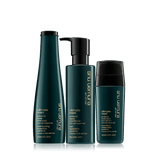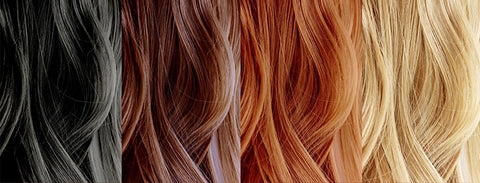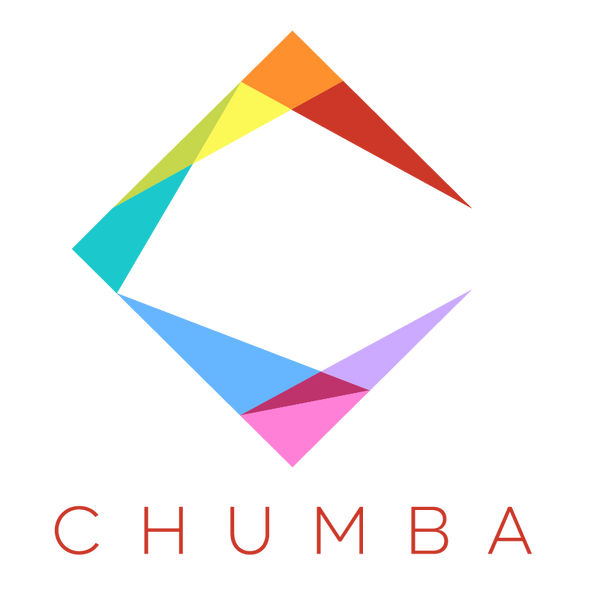Bleaching your hair is a big deal, and there is a lot of things you should know if you’ve just recently taken the plunge or if you’re still sitting on the fence.
Being the hair bleaching nerd that I am at Chumba Concept Salon, I’ve gone ahead and answered Google’s top hair bleaching questions for you.
With the hope that I can help you with any problems you’re facing, or help you do your research when it comes to hair bleaching.

1. How bad is bleaching your hair?
Bleaching your hair forces to cuticle to lift, which is the outer surface layer of the hair made up of scales.
This allows the lightener to fully penetrate to the inner cortex of the hair and break up the natural pigment.
The cuticle is then sealed back down again after conditioning or treating the hair.
Repeated overlapping of bleach can permanently raise your cuticle and weaken or break the protein bonds inside the hair, which causes loss of moisture, brittleness and breakage.

Bleaching the hair responsibly and professionally with the right techniques, products and protective and strengthening treatments will leave you with very little damage.
However, as the bleach does alter the bonds inside the cortex of the hair, you may notice changes in the natural texture of your hair.
It is especially important to look after your hair properly at home with good quality shampoos, conditioners and treatments recommended by your hairdresser.
As bleached hair loses more moisture than un-bleached hair due to the cuticle being lifted, you will need to use more nourishing products to keep your hair remaining healthy.
2. Is it safe to bleach your hair at home?
I think we’ve all seen enough home-hair-bleaching disaster videos to know that bleaching your hair at home is NEVER a good idea.
Apart from the uneven, patchy results you can be left with breakage and even severe burns on the scalp.
You have to remember that you are using chemicals that can harm the skin and hair if not used properly.
Hydrogen peroxide, which is the main ingredient in hair bleach, can cause skin irritation and eye irritation if not used appropriately. It can cause chemical burns so severe that can cause permanent hair loss and scaring.


Professional hairdressers undergo years of training to learn how to use chemicals like hydrogen peroxide safely.
Even in salon, things like skin irritation and allergic reactions aren’t all that uncommon, even when using salon-exclusive, higher-grade lighteners that aren’t available to the consumer.
It just makes it even more likely that something is bound to go wrong when using a low-quality bleach at home. Please take my advice and leave it to the professionals.
This article from FutureDerm goes into more depth about the ingredients and possible complications when using bleach.
3. Can I go blonde without bleaching my hair?
It’s hard to resist the allure of going blonde.
But if you’re worried about the effects that bleach can have on the hair, there is another option, and it’s called high lift.
High lift hair colour is a permanent colour that lightens your hair by ‘lifting’ some of the natural pigment in your hair and deposits tone into it at the same time.
It does this by using a high level of ammonia and colour pigment to open up the cuticle.

There is a catch though.
Firstly, high lift doesn’t have the same lifting power that bleach does. Bleach can lift the hair up to 8 levels to achieve maximum lightness, while high lift can only lift about 4-5 levels.
So, if you’re hair is quite dark and your goal is to be platinum blonde, high lift is not going to be your best option.
Next, high lift can’t lighten hair that has any permanent colour in it already, so, it can only to be used on virgin hair.
Finally, as most high lift’s are high in ammonia, it can still cause damage to the hair, especially if used incorrectly. In most cases using a bleach lightener is still your best bet when trying to go blonde.
4. How do I re-hydrate my hair after bleaching?
Using the right products is key to keeping your blonde hair healthy.
You'll need a good quality shampoo and conditioner specifically for what your hair needs, as well as a good treatment.
There are many amazing shampoos and conditioners out there that are specifically for moisture, coloured hair or reparation for damaged and sensitised hair.
It’s important to have a good balance between reparative, strengthening protein and hydrating products. Too much protein in the hair can have the adverse effect and leave the hair brittle.
Choosing the right products can be challenging so if you’re not sure, it’s always a good idea to ask a professional.
Pop into the salon or send us an email and we’d be more than happy to help.

Shu Uemura Urban Moisture Shampoo, Conditioner and Treatment

Shu Uemura Ultimate Reset Shampoo, Conditioner and Duo-Serum Leave in Treatment

Khairpep K18 Peptide Masque
A treatment that us hairdressers are obsessing over at the moment is Khairpep.
It’s perfect for all hair types and it works a treat on bleached hair.
The Khairpep works to replace broken bonds deep in the hair’s cortex with strong bonds. Restoring and strengthening the hair from the inside out.
When the hair is healthy and strong, it retains more moisture. To find out more about the Khairpep, click here.
5. Will purple shampoo fix orange hair?
If your hair has been bleached, you may have decided to opt for a purple shampoo.
Purple shampoos can be great for maintaining blonde hair and fighting off warmth and brassiness in-between colour sessions.
They can’t, however, be used in the place of a toner, especially if you are after a cool or ashy-toned blonde.
Purple shampoo will only neutralise brassiness in yellow/gold hair because purple is opposite yellow on the colour wheel.

If your struggling with brassy orange hair, chances are, your hair isn’t light enough for a purple shampoo to have much effect.
Looking at the colour wheel, the opposite of orange is blue.
There are some blue shampoos for neutralising orange hair out there, but they should be used with caution.
If there are any lighter, more yellow parts of your hair while using the blue shampoo, those parts will turn green.
Your best options to fix orange hair is to have your hair carefully re-lightened and corrected professionally, or toned to an acceptable colour.

6. How many sessions does it take to go from black to blonde?
There are a couple of factors that will determine how long it will take to get you to your dream hair.
Things like the current condition of the hair and whether you’ve had any colour in the past will determine how many sessions it will take.
If you have virgin hair that is very dark or black naturally, then you can expect around 2-3 sessions. If you’ve got permanent dark colour in your hair you can expect 3-5+ sessions to lift it out.
To get a better idea of the journey, your hairdresser will take a test strand of your hair during your consultation to determine how light your hair will get and how many sessions may be required, prior to your appointment.

If your hair is black box dyed, you might be in for 5+ sessions to get you blonde.
Because box and packet dyes from the supermarket or chemist leave such a resistant build up the hair, it can be difficult for bleach to cut through it.
In a lot of cases with box dye, if the build up is strong enough, it can be impossible to lift it all out safely while keeping the hair healthy.
In cases like these, the best option is to let the hair grow out and continually cut off the old dyed ends before bleaching.
Author: Jessie Riches, Senior Stylist @ Chumba's Windsor Salon

JESSICA RICHES
Meet Jessie the 'Champ'
So we found her at the Cheese Cake Shop... yup we did... all we heard for the first six months was "at the Cheese Cake Shop we..." That was driving Queen Bee nuts because she hates Cheese cake lol! But we all love 'lil-Jess' so we hung in there.
Besides the endless cake stories there was a little something that made this young lady stand out very early on - those hands OMG - those hands can 'do hair'.
'Old' hairdressers know talented digits when they see them and all of the 'mature' brains-trust in the House of Chumba could see the talent just oozing from those little fingers. IF only we could just shut her up about baking cakes we'd all be just fine!
Well the little baker did snap out of desert land and has now stormed onto the Big Hair stage by:
a) ruling the roost on the Chapel St salon floor and organising the Genius Colleen
b) winning the title of the AHFA Australia Best Apprentice Hairdresser 2019 (she's also a Finalist for AHFA 2020... to be announced)
No one's mentioned Cheese Cake since btw - good riddance to that.
We sometimes use the label 'true blood' - this refers to staff that are have trained from a first year apprentice to fully qualified with us all the way. Jessica is a 'true blood - and doesn't it show!
We can't wait to see her develop even further in her career.

